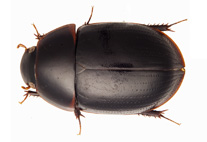Abstract
The American box turtles (Terrapene spp.) consist of four historically recognized species based primarily on morphological data (Minx 1996): Terrapene carolina (Linnaeus), T. ornata (Agassiz), T. nelsoni (Stejneger), and T. coahuila (Schmidt & Owens). Each of these species is polytypic except for T. coahuila. Recently, the Placyk lab re-assessed the classification of Terrapene using molecular phylogenetic data, and suggested elevating a clade consisting of T. carolina triunguis (Agassiz), T. c. mexicana (Gray), and T. c. yucatana (Boulenger) to a distinct species: Terrapene mexicana ssp. (Martin et al. 2013). Our dataset included all Terrapene species and almost all of the subspecies (except for T. nelsoni klauberi), as well as large sample sizes and a wide geographic sampling for both mitochondrial (mt) and nuclear (nuc) DNA. The mtDNA Cytochrome b (Cytb) gene and a nucDNA intron from the Glyceraldehyde-3-phosphate-dehydrogenase (GAPD) gene were used for phylogenetic analyses, and indicated that the T. mexicana clade was highly divergent from the remainder of the original T. carolina clade. In addition, the Cytochrome c oxidase subunit 1 (COI) gene, which is used in many animals for DNA barcoding, was sequenced and used to calculate pairwise percent DNA sequence divergence between taxa. The barcoding data also strongly supported our suggested classification revisions. However, because possible introgression was detected for some of the individuals, T. mexicana was not recognized as a distinct species in a recent assessment of Testudines taxonomic updates (Fritz & Havaš 2013). The purpose of this treatise is to suggest that the possible presence of introgression seen in Martin et al. (2013) does not warrant disregarding T. mexicana as a unique species.

